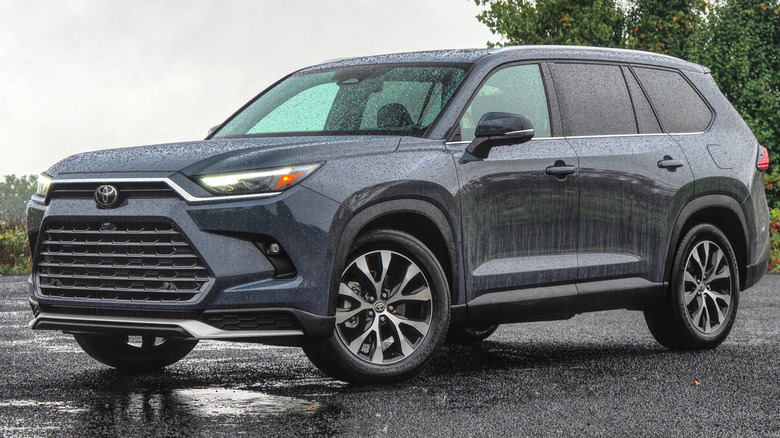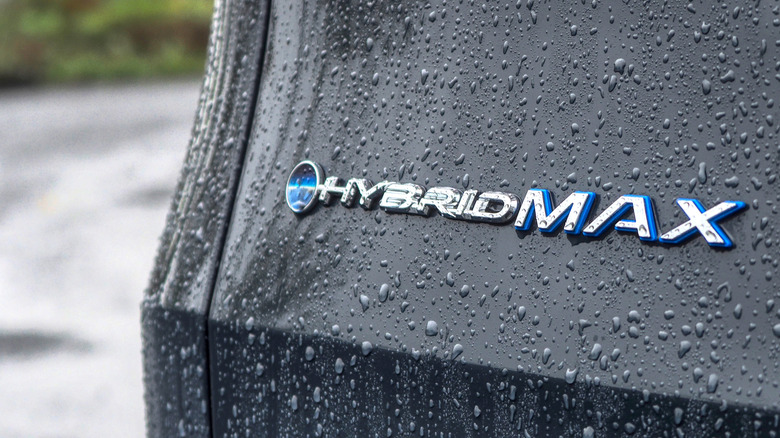Here's How Far The 2024 Toyota Grand Highlander Hybrid Max Will Go On A Single Tank
A big SUV can be perfect for a family road trip, but while bathroom breaks are a biological necessity, having to stop to fill up with gas can still be a chore. For three-row models like the 2024 Toyota Grand Highlander, a completely new addition to the automaker's line-up in 2023, plenty of passenger and load capacity have to be balanced against overall range and fuel economy. That's even more the case with Toyota's optional Hybrid Max engine.
The standard 2024 Grand Highlander gets a non-electrified, 2.4-liter four-cylinder turbocharged engine. It's rated at 24 mpg combined by the U.S. Environmental Protection Agency (EPA) in front-wheel drive form or 23 mpg if you opt for the all-wheel drive version.
Toyota also has a 2024 Grand Highlander Hybrid with an electrified 2.5-liter gas engine. It's considerably more frugal, rated at 36 mpg combined for the front-wheel drive model or 34 mg for the all-wheel drive version.
The most power doesn't necessarily mean poor economy
Eager drivers, though, will probably be looking to Toyota's Hybrid Max powertrain. Offered on the most expensive trims of the Grand Highlander, it uses a 2.4-liter turbo engine alongside a more potent configuration of electric motors and comes with all-wheel drive as standard. As we found in our 2024 Grand Highlander Hybrid Max review, it leaves the three-row SUV feeling positively eager on the road.
The downside to the extra power is a hit on fuel economy. The Hybrid Max version of the Grand Highlander is rated for 26 mpg in the city, 27 mpg on the highway, and 27 mpg combined. With a full tank of gas — that's 17.17 gallons in the Grand Highlander Hybrid Max — you should be able to drive 464 miles, according to the U.S. EPA.
Even with the more potent engine, according to the EPA's math you'll spend just $250 more in fuel costs over five years in the Hybrid Max, compared to the average new vehicle. The EPA bases its estimates on 15,000 miles of annual driving, of which 45% takes place on the highway and 55% in the city. If that doesn't reflect your typical driving behaviors, you can customize the calculations on the EPA's Fuel Economy site.

